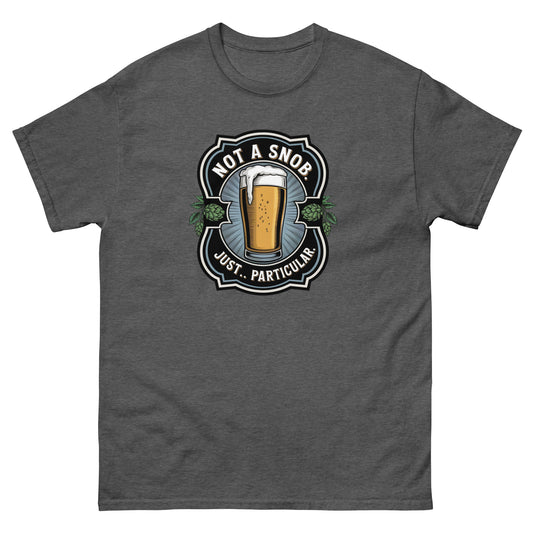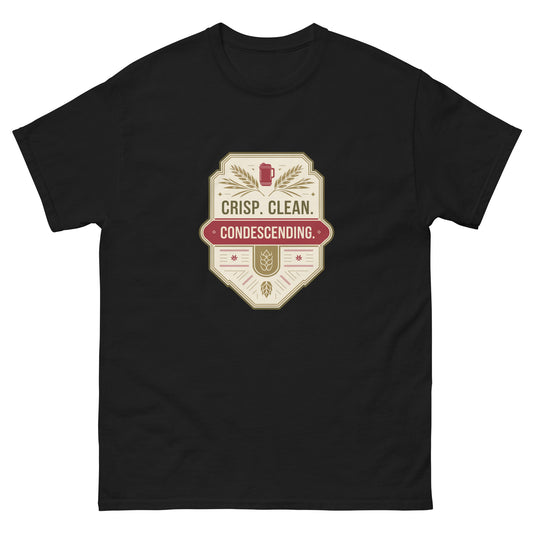How to Brew a Crisp, Refreshing Lager at Home
Share
Ah, lager. It’s the beer that suits any occasion. Whether you’re firing up the barbecue or just kicking back in the shade, there’s something special about sipping on a cold, crisp lager that’s been brewed with your own two hands. If you’re new to homebrewing or just keen to try your hand at creating a thirst-quenching lager, you’re in the right place. Let’s dive into the steps, tips, and tricks to help you brew a lager that’ll have your mates lining up for a taste!
Why Lager? What Makes It So Special?
Lager isn't just a beer—it's an experience. Known for its clean and crisp profile, a good lager feels like a refreshing breeze on a hot day. It doesn't try to overpower your taste buds but, instead, charms them with subtle notes of malt and hops. Compared to other beer styles, it tends to involve a bit more patience (we’ll chat about that), but trust me, the end result is totally worth it. Plus, there’s something immensely satisfying about offering someone a pint and saying, “I made this.” Cue instant respect!
What You’ll Need to Get Started
Before we talk technique, let’s cover your shopping list. A basic lager doesn’t require a treasure trove of gear, so no need to sell your left kidney to get started. If you’re just dipping your toes into homebrewing, a good beginner kit will have most of what you need:
- Fermenter: This is your beer’s temporary home while it works its magic.
- Hydrometer: Helps you measure alcohol content, so you’ll know how “cheeky” your beer is.
- Ingredients: Lager-specific malt, hops (like Saaz or Hallertau for that classic floral aroma), yeast designed for lagers, and good-quality water.
- Airlock: Keeps oxygen out while letting gases escape during fermentation. Think of it as your beer’s security system.
- Brew kettle: Any large, durable pot will do the trick to boil your wort.
- Thermometer: Temperature control is crucial for lager brewing.
- Bottling gear: Bottles, caps, and a trusty capper.
If you need supplies, our homebrew section at Strathalbyn H Hardware is stocked up and ready to meet all your brewing needs. Don’t worry; we love answering questions, so pop in if you’re unsure which gear is right for you.
The Brewing Process Made Simple
Buckle up, because we’re about to turn some humble ingredients into liquid gold. Here’s the step-by-step guide:
1. Smash Your Prep Work
Clean, clean, and clean again! Sanitising all your equipment is the golden ticket to a beer that tastes great rather than funky or, worse, undrinkable. Lager yeast isn’t as forgiving as ale yeast, so sloppy prep isn’t an option here. Trust me, you don’t want to put in weeks of effort only to be greeted by a bottle of regret.
2. Create Your Wort
Boil your malt extract and hops in water to create a glorious liquid called wort (pronounced “wert”). This is the base of your beer. The boil not only brings out the flavours of the hops but also sterilises the mixture, so don’t rush it. A good boil typically lasts about an hour.
3. Cool Down, Literally
Once your boil is done, it’s time to cool the wort down quickly. Aim for a temperature around 10-15°C—this is where your lager yeast will thrive. A simple ice bath for your brew kettle can work wonders if you don’t have a fancy wort chiller.
4. Let the Yeast Do Its Thing
After cooling, transfer your wort into the fermenter, pitch (sprinkle) your lager yeast, and seal it up with the airlock. Then tuck your fermenter away somewhere cool. Lagers love low temperatures for fermentation, ideally between 10-13°C. If you’ve got a temperature-controlled fridge or cool space, now’s the time to use it.
5. Find Your Inner Zen – It Takes Time
This is where patience pays off. Lagers need a bit more time to ferment and condition compared to ales. Let your beer ferment for 2-3 weeks, then move it to a secondary fermenter (optional but recommended). From there, you’ll want to “lager” it—store it at even colder temperatures (around 1-4°C) for another 3-6 weeks. Sounds like a commitment, but trust me, the smooth, crisp finish will make you glad you waited.
6. Bottling Your Beauty
Add some priming sugar to your beer and bottle it up, being careful to avoid disturbing the sediment at the bottom of your fermenter. Once capped, let the bottles sit for another 2-3 weeks at room temperature to carbonate. After that, chill them, gather your friends, and pour the first round!
Tips for Lager Brewing Success
- Don’t skimp on the yeast: Lagers typically require more yeast than ales, so make sure to grab enough for your batch size.
- Stay clean: Keep everything sterilised. There’s no such thing as “too clean” in brewing!
- Be patient: Good lager takes time. Rush it, and you’ll taste the shortcuts.
- Ask for help: If you run into snags, swing by our store for advice. We’ve been troubleshooting brews for years, and there’s no such thing as a silly question.
What’s Next?
Once you’ve mastered brewing a lager, the world is your brewery. Experiment with different hop varieties, malts, or even incorporate fruit and herbs for a unique twist. Who knows? You might even create that signature brew you’ve always dreamed about—the one your friends will beg you to bring to every BBQ.
Ready to give it a go? Everything you need to get started is waiting for you at Strathalbyn H Hardware’s homebrew section. Drop by, grab the gear, and let’s get brewing. Your crisp, refreshing lager awaits. 🍺
Cheers to your first batch of brilliance! See you soon at Strathalbyn H Hardware.
- Candeece








